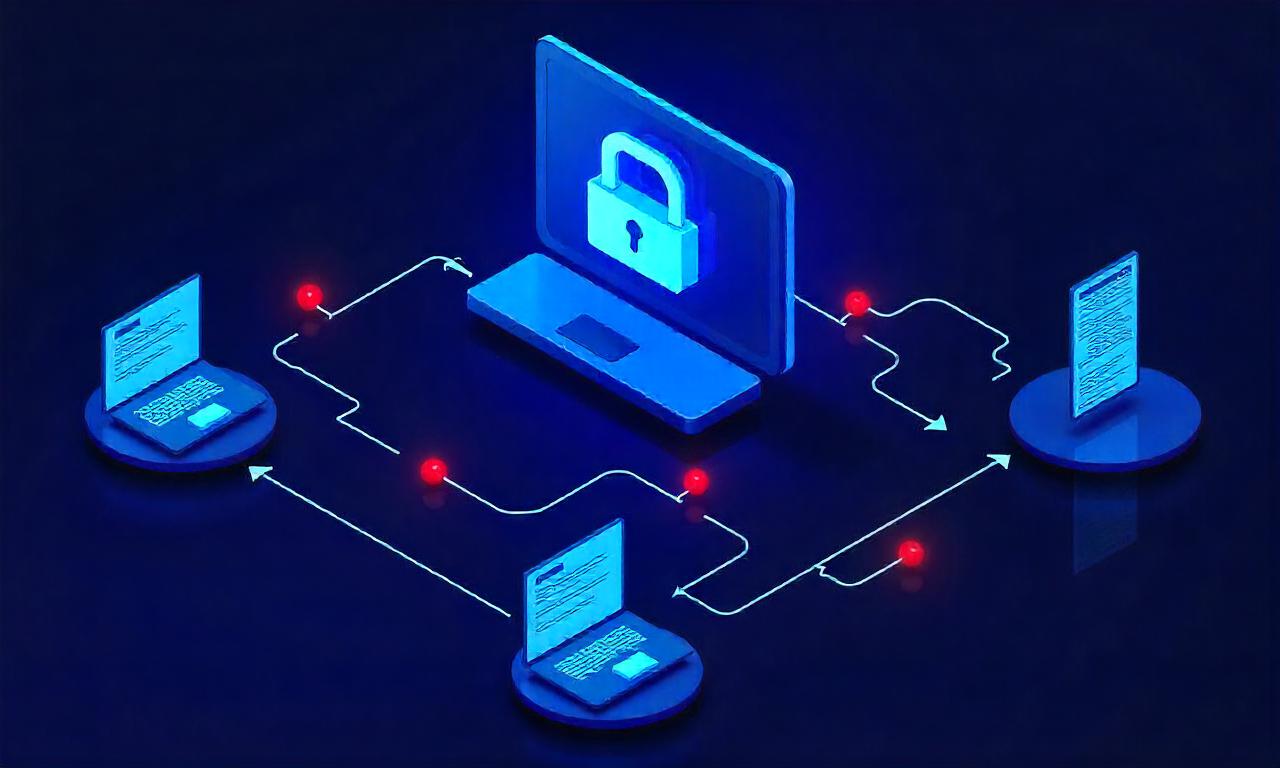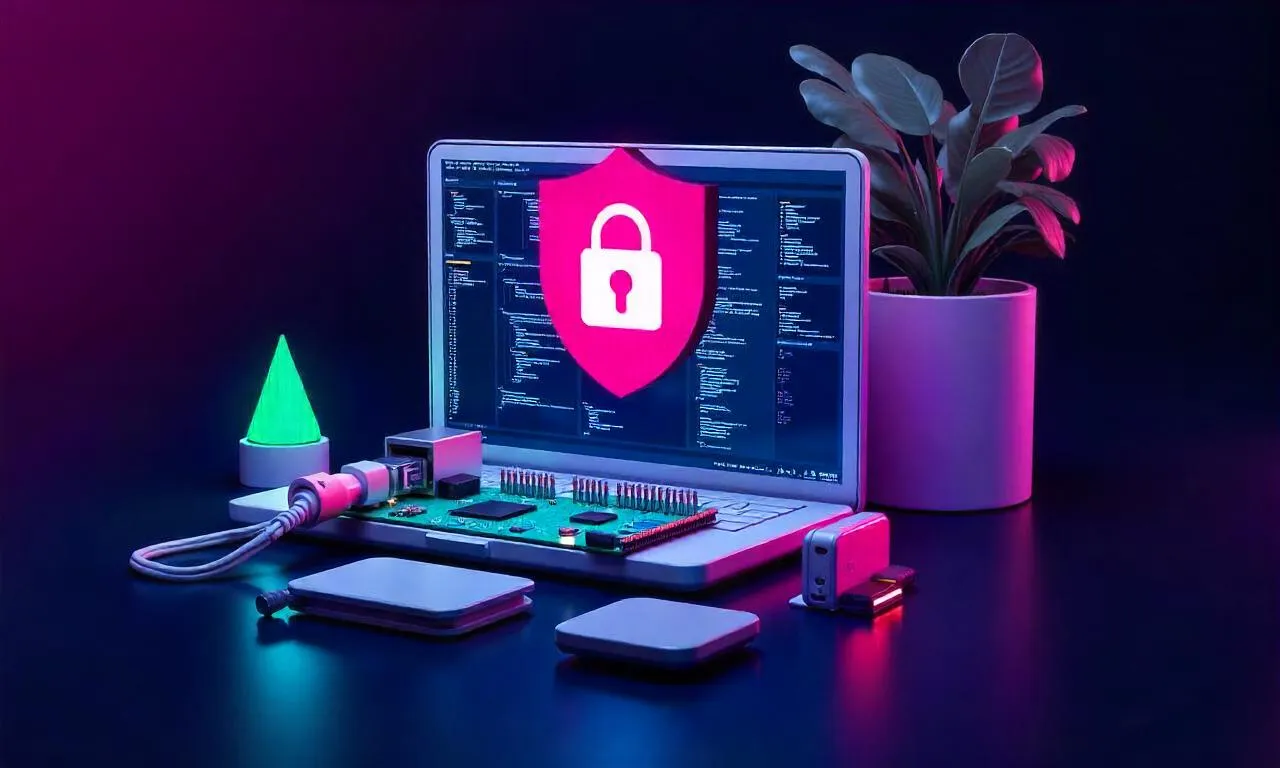In today’s digital age, secure remote access has become essential for both individuals and businesses. Whether you’re working remotely, accessing sensitive data, or protecting your online privacy, a Virtual Private Network (VPN) is a powerful tool. Among the many VPN protocols available, L2TP over IPsec stands out as a robust and reliable choice. This L2TP over IPsec VPN setup guide will walk you through the process of configuring this protocol, ensuring a secure and stable connection. With its combination of Layer 2 Tunneling Protocol (L2TP) and Internet Protocol Security (IPsec), this setup offers strong encryption and secure data transmission, making it ideal for users who prioritize privacy and security.
This guide is designed to be comprehensive, walking you through every step of the setup process while highlighting best practices for long-term SEO relevance. By following this L2TP over IPsec setup guide, you’ll not only secure your network but also optimize your content for search engines, ensuring it remains discoverable and valuable over time.
Table of Contents
ToggleUnderstanding L2TP over IPsec: What You Need to Know
Before diving into the setup process, it’s crucial to understand the L2TP over IPsec protocol and how it functions. L2TP is a tunneling protocol that allows for the creation of virtual private networks, while IPsec is a suite of protocols used to secure internet communications. When combined, L2TP over IPsec provides a secure tunnel for data transmission, ensuring that your online activities are protected from eavesdropping and man-in-the-middle attacks.
One of the key advantages of L2TP over IPsec is its strong encryption. Unlike some other protocols, IPsec uses AES-256 or 3DES for data encryption, making it highly secure. Additionally, L2TP over IPsec supports IKE (Internet Key Exchange) for key management, which simplifies the setup process and enhances security. This protocol is also known for its compatibility with various operating systems, including Windows, macOS, Linux, and mobile platforms like iOS and Android.
To set up L2TP over IPsec, you’ll need a VPN server and a client device. The server will handle encryption, authentication, and tunnel management, while the client device will connect to the server and maintain the secure connection. Understanding these components is the first step in creating a L2TP over IPsec setup guide that’s both effective and user-friendly.
Key Components of L2TP over IPsec Setup
Setting up an L2TP over IPsec connection involves several critical components. First, you need IPsec to handle data encryption and authentication. IPsec operates at the network layer (Layer 3) of the OSI model, securing all data packets transmitted over the network. This makes it ideal for encrypting traffic between your device and the VPN server.
Second, L2TP functions at the data link layer (Layer 2) and is responsible for establishing and maintaining the tunnel. While L2TP alone doesn’t provide encryption, it works seamlessly with IPsec to create a secure tunnel. The IKE protocol is used to negotiate security associations and exchange cryptographic keys, ensuring a strong and stable connection.
Finally, client configuration is essential. Whether you’re using a Windows PC, macOS, or mobile device, the setup process involves entering server details, selecting authentication methods, and configuring encryption settings. Each component plays a vital role in the overall security and performance of the L2TP over IPsec connection.
Benefits of L2TP over IPsec
L2TP over IPsec offers several advantages over other VPN protocols. One of the most significant benefits is its strong security features, combining the tunneling capabilities of L2TP with the encryption of IPsec. This ensures that your data is protected from unauthorized access and network vulnerabilities.
Another benefit is compatibility. L2TP over IPsec is supported by most operating systems, making it accessible for a wide range of users. This flexibility allows you to use the same setup guide across different devices without needing specialized software. Additionally, it’s easy to configure, even for beginners, thanks to its standardized protocols and straightforward settings.
Lastly, L2TP over IPsec provides reliable performance. While it may not be as fast as SSTP or OpenVPN, it offers stable connectivity and low latency, which is essential for data-sensitive applications. These benefits make it a popular choice for users who require secure remote access without compromising on functionality.
Step-by-Step L2TP over IPsec Setup Guide
Setting up L2TP over IPsec involves a series of precise steps that ensure a secure and functional connection. This L2TP over IPsec setup guide will walk you through the process, from choosing a reliable service provider to configuring your client device. Let’s begin with the preparation phase.
Choosing a Reliable L2TP over IPsec Service Provider
Before you start configuring your L2TP over IPsec connection, it’s important to select a service provider that offers strong encryption, stable servers, and user-friendly tools. When evaluating providers, look for features like support for AES-256, pre-shared keys, and user authentication options.
A good service provider will also have clear documentation and customer support. This is especially helpful if you’re new to VPN setups and need guidance. Additionally, consider the server locations and speed of the provider, as these factors can affect your connection quality and performance.
Tips for Selecting a Service Provider
– Check encryption standards (AES-256 is preferred). – Ensure compatibility with your operating system. – Look for user authentication methods (like username and password, two-factor authentication, or pre-shared keys). – Compare pricing plans and customer reviews.
Configuring the Server: A Detailed Walkthrough
Once you’ve selected a service provider, the next step is to configure the server. This involves setting up IPsec and L2TP on the server side to ensure a secure connection. Here’s a breakdown of the key configuration steps.
a. Setting Up IPsec on the Server
To configure IPsec, you’ll need to install and set up the necessary software on your server. This can be done using OpenVPN, StrongSwan, or other IPsec implementations. The configuration files will include parameters like pre-shared keys, encryption algorithms, and authentication methods.
– Install IPsec software: Use tools like StrongSwan or Cisco AnyConnect. – Generate pre-shared keys: These are used for key exchange and encryption. – Configure the server’s IPsec settings: Define security policies, encryption standards, and authentication protocols.
b. Enabling L2TP on the Server
After IPsec is configured, the next step is to enable L2TP on the same server. This involves setting up L2TP tunnels and ensuring they communicate seamlessly with the IPsec protocol.
– Install L2TP software: Use Cisco AnyConnect or strongSwan for L2TP setup. – Configure L2TP settings: Define tunnel parameters, user authentication, and connection ports. – Test the connection: Verify that IPsec and L2TP are working together without conflicts.
Setting Up the Client: Connecting to the Server
With the server configured, it’s time to set up the client device. This involves entering the server details and configuring the connection. The client setup process can vary depending on your operating system and VPN client software.
a. Configuring the Client on Windows
For Windows users, the built-in VPN client is a convenient option. To set up L2TP over IPsec, follow these steps: 1. Open Settings > Network & Internet > VPN. 2. Click Add VPN profile. 3. Enter the server address, username, and password. 4. Select L2TP/IPsec as the connection type. 5. Enable IKEv2 for enhanced security and performance.
b. Configuring the Client on macOS
On macOS, the built-in network preferences can be used to set up L2TP over IPsec. Here’s how: 1. Open System Preferences > Network. 2. Click + to add a new VPN connection. 3. Choose L2TP over IPSec as the type. 4. Enter the server address, username, and password. 5. Set encryption settings and authentication protocols.
c. Configuring the Client on Mobile Devices
For mobile devices like iOS or Android, you’ll need to use a third-party app or the built-in settings. The setup process involves entering server details and selecting the correct protocol.
– iOS users: Go to Settings > VPN > Add VPN Configuration. – Android users: Use the built-in settings or download a reliable app. – Ensure the connection type is set to L2TP over IPSec.
To ensure your L2TP over IPsec setup guide remains SEO-friendly and relevant over time, you need to optimize your content for keywords, user intent, and long-term visibility. Here are key strategies to achieve this.
Identifying the Right Keywords
SEO begins with keyword research. For this guide, focus on long-tail keywords like “how to set up L2TP over IPsec,” “L2TP over IPsec configuration steps,” and “L2TP over IPsec security features.” These keywords are less competitive and more specific, which can improve search engine rankings.
a. Primary Keywords
– L2TP over IPsec setup guide – How to configure L2TP over IPsec – L2TP over IPsec security benefits
b. Secondary Keywords
– L2TP vs IPsec comparison – Setting up a secure L2TP over IPsec connection – Troubleshooting L2TP over IPsec
Structuring Content for SEO
Organizing your guide with clear headings, bullet points, and tables improves readability and search engine optimization. Each section should have relevant keywords in the title, subheadings, and content.
a. Using Semantic Headings
– H1: “How to Set Up L2TP over IPsec VPN: A Step-by-Step Guide” – H2: “Understanding L2TP over IPsec: What You Need to Know” – H3: “1. Choosing a Reliable L2TP over IPsec Service Provider” – H4: “a. Setting Up IPsec on the Server”
This semantic structure helps search engines understand the content hierarchy and improve indexing.
b. Incorporating Tables
Tables are ideal for SEO because they organize data and highlight comparisons. For example, you can create a table comparing L2TP over IPsec with other protocols to enhance user engagement and content value.
| Protocol | Encryption | Authentication | Speed | Security | Compatibility | |——————|————-|—————-|——|———-|—————| | L2TP over IPsec | AES-256 | Pre-shared keys, username/password | Moderate | High | Broad | | PPTP | MPPE (40-128 bits) | Username/password | High | Medium | Broad | | SSTP | TLS 1.2 | Username/password | High | High | Windows | | OpenVPN | AES-256 | Username/password, certificate-based | High | High | Broad |
This comparison table not only organizes information but also adds value for users comparing protocols.
Enhancing User Experience and Engagement

To increase user engagement and encourage long-term SEO benefits, you should include interactive elements like FAQ sections, step-by-step lists, and visual aids. These elements make your guide more user-friendly and search engine optimized.
Crafting an FAQ Section
An FAQ section is essential for addressing common user concerns and improving search engine rankings. For L2TP over IPsec, users often have questions about setup time, security, and compatibility.
a. Sample FAQ Questions
– Q: How long does it take to set up L2TP over IPsec? A: The setup process typically takes 10-15 minutes, depending on your familiarity with the tools.
– Q: Is L2TP over IPsec secure enough for business use? A: Yes, it offers strong encryption and secure data transmission, making it ideal for sensitive business data.
– Q: Can I use L2TP over IPsec on mobile devices? A: Yes, it’s supported on iOS and Android devices with the correct configuration.
Using Bullet Points and Numbered Lists
Bullet points and numbered lists improve readability and user engagement. They also help search engines parse content more efficiently.
a. Benefits of Using Lists
– Simplifies complex information. – Improves page load time by reducing text density. – Enhances user experience with clear and concise instructions.
b. Examples of List Usage
– Step-by-step setup: 1. Choose a reliable service provider. 2. Configure the server with IPsec and L2TP settings. 3. Set up the client device with correct authentication details.
– Common issues: – Connection drops. – Slow speeds. – Authentication errors.
These lists make your guide more actionable and user-friendly, which is crucial for SEO optimization.
L2TP over IPsec: Best Practices for Long-Term Relevance
To ensure your guide remains relevant over time, follow best practices that align with SEO trends and user behavior. These include regular updates, mobile optimization, and content diversification.
Regular Updates and Content Refreshing
SEO is not static, and your content should evolve with technological advancements. For L2TP over IPsec, new encryption standards or protocol enhancements may be introduced. Regularly updating your guide with these changes ensures it stays current and search-friendly.
a. How to Refresh Your Guide
– Review new IPsec features or L2TP improvements. – Add case studies or user testimonials. – Update troubleshooting tips to reflect common issues.
b. Benefits of Content Refreshing
– Maintains search rankings by using up-to-date keywords. – Improves user trust with accurate and recent information. – Encourages repeat visits to your guide.
Mobile Optimization and Responsive Design
With mobile users making up a significant portion of internet traffic, your guide should be optimized for mobile devices. Use responsive design to ensure easy navigation and clear content presentation on smartphones and tablets.
a. Tips for Mobile Optimization
– Use short paragraphs and clear headings. – Implement fast loading images and embedded videos. – Ensure touch-friendly buttons and mobile-optimized layouts.
b. Impact on SEO
Mobile-optimized content is crucial for SEO because search engines prioritize mobile-friendly websites. This enhances user experience and improves search engine rankings.
FAQ: Frequently Asked Questions About L2TP over IPsec Setup
Frequently asked questions (FAQs) are an essential part of any setup guide, as they address user concerns and improve SEO. Here are common questions about L2TP over IPsec.
Q1: What is L2TP over IPsec?
L2TP over IPsec is a VPN protocol that combines Layer 2 Tunneling Protocol (L2TP) with Internet Protocol Security (IPsec). It provides a secure tunnel for data transmission, ensuring strong encryption and privacy.
Q2: Is L2TP over IPsec secure?
Yes, L2TP over IPsec offers strong security due to AES-256 encryption and IKE key exchange. It is ideal for users who require a high level of security for remote access.
Q3: How long does it take to set up L2TP over IPsec?
The setup time typically ranges from 10 to 15 minutes, depending on your familiarity with the process. Steps can be completed quickly with clear instructions.
Q4: Can I use L2TP over IPsec on mobile devices?
Yes, it is supported on iOS and Android devices with the correct configuration. Mobile users can access the same secure connection as desktop users.
Q5: What are the common issues when setting up L2TP over IPsec?
– Connection drops due to incorrect server settings. – Authentication errors from wrong usernames or passwords. – Firewall conflicts with IPsec ports.
Q6: Is L2TP over IPsec faster than other protocols?
While it may not be the fastest protocol, it offers stable performance and low latency, making it suitable for most users. Speed can vary based on server location and internet connection quality.
Q7: What is the difference between L2TP and IPsec?
L2TP is a tunneling protocol, while IPsec is a suite of protocols for encryption and authentication. Together, they create a secure and stable connection.
Q8: How to verify the connection?
To confirm your L2TP over IPsec setup is working, check your IP address and ensure data is encrypted. You can also use online tools like IP leak detectors to verify security.
Q9: Can I use L2TP over IPsec on Linux?
Yes, L2TP over IPsec is supported on Linux with tools like strongSwan. Configuration involves editing files and setting up the server.
Q10: What is the best practice for configuring IPsec?
Use AES-256 encryption, pre-shared keys, and IKEv2 for key exchange. Regular updates and secure authentication methods are essential for long-term performance.
Conclusion
Setting up L2TP over IPsec requires careful planning, precise configuration, and attention to security details. By following this L2TP over IPsec setup guide, you’ll ensure a secure and stable connection that protects your data and enhances privacy. Whether you’re a beginner or an advanced user, this guide provides step-by-step instructions to help you configure the protocol efficiently.
Remember to optimize your content with relevant keywords, semantic structure, and interactive elements like FAQs and tables. These strategies will improve SEO rankings and user engagement, ensuring your guide remains valuable over time. With regular updates and user-friendly design, your L2TP over IPsec setup guide will attract and retain visitors, positioning it as a go-to resource for secure remote access.
Summary
This L2TP over IPsec setup guide provides a comprehensive step-by-step process for configuring a secure and stable connection. By combining L2TP and IPsec, users gain strong encryption and privacy protection, making it ideal for remote work and data-sensitive applications. The guide covers key components, server and client configuration, and best practices for SEO optimization. It includes tables for protocol comparisons, FAQs to address user concerns, and bullet points for clear instructions. Whether you’re using a Windows PC, macOS, or mobile device, this setup guide ensures easy access to a secure connection. With regular updates and mobile optimization, your guide remains relevant and discoverable, positioning it as a reliable resource for long-term SEO.
















